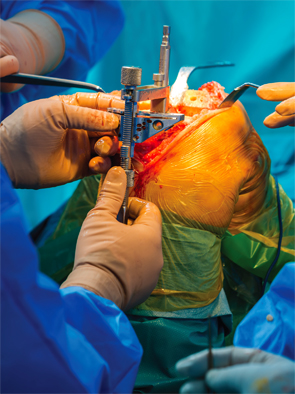
egyjanek/shutterstock.com
A study that looked at the impact of hepatitis C on short-term outcomes of total joint arthroplasty found an increase in co-morbidity compared with patients without the liver disease.
The number of people in need of total joint arthroplasty is expected to rise in conjunction with an aging population and advances in hepatitis C treatments. With this in mind, the study aimed to assess the association between hepatitis and perioperative outcomes of lower-extremity total joint arthroplasty, the authors note in a study published in The Journal of Bone & Joint Surgery.1
“Awareness is growing among arthroplasty surgeons that hepatitis is becoming increasingly common among patients getting surgery to replace hip or knee joints,” says co-author Michael Mont, MD, director of joint preservation and reconstruction for LifeBridge Health, Baltimore.
Rising Problem
“For example, from 1998 to 2010, the number of patients who were getting total joint arthroplasties who have hepatitis C infection tripled,” Dr. Mont says. Results also showed that these patients had an increased risk of medical and surgical complications and stayed longer in the hospital after the operation compared with patients in the study from the matched control group.
Chronic infection of hepatitis C can severely damage the liver, and it may also contribute to the development of rheumatoid arthritis. Baby boomers born between 1945 and 1965 are at higher risk for hepatitis C, according to the Centers for Disease Control and Prevention. Because they are an aging population, they are also more likely to undergo hip arthroplasty.
The Study

Dr. Mont
Researchers involved in the study identified patients who underwent either a total hip or knee arthroplasty in the U.S. from 1998 to 2010, using the Nationwide Inpatient Sample database. They matched controls in a three-to-one ratio to patients with hepatitis C infection according to surgical procedure, age, race, sex, Deyo comorbidity score and year of surgical procedure. Outcomes included perioperative complications (any, medical, surgical) and mean length of stay.
Out of a database of some 1.7 million arthroplasty patients, researchers identified and reviewed the outcomes of about 8,000 patients who had hepatitis C and had joint arthroplasties.
“What we found was not incredibly surprising, that patients who have hepatitis C have more complications after getting a hip or knee arthroplasty,” Dr. Mont says.
Overall, patients with hepatitis C were 30% more likely to have any type of complication and were 15% more likely to have a medical complication. Most notably, risks for surgical complications were 78% higher among patients with hepatitis C than matched controls. The surgical risks, which include complications such as infections, may be associated with multi-organ complications common in patients with the virus, according to the article.

